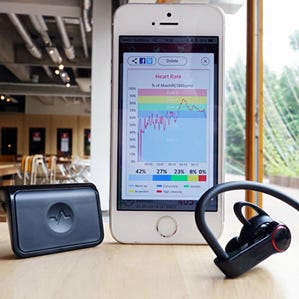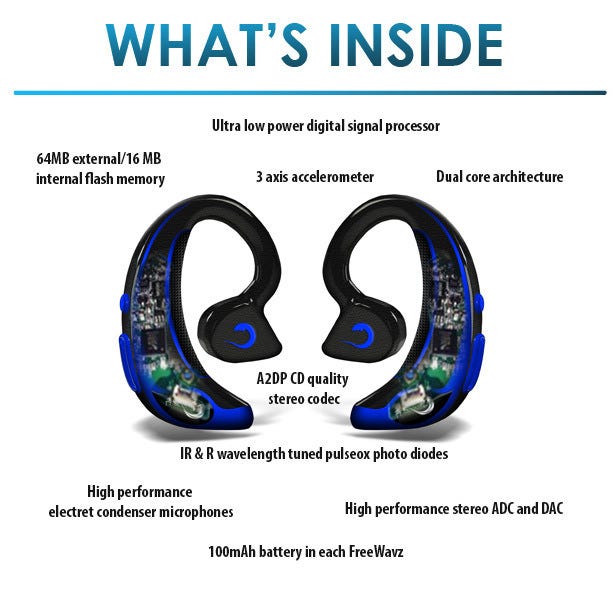August 5, 2014
In an age where selfies and status updates have become part of the daily routine, fitness tracking is quickly rising to the fore. As smartwatches and fitness bands continue to thrive, a new technology may soon be pulsating the ears of fitness buffs everywhere.
|
These LG earbuds shown on the right employ Valencell's technology to measure heart rate and various other biometric signals. |
With the introduction of smartphones and countless fitness apps, many companies began investing heavily in wearable devices located on the wrist to measure various body activity such as heart rate, respiration rate, and body temperature during workouts. It wasn't until recently that someone began to think outside the box and find a way to monitor these metrics without using a separate device. That someone was Steven LeBoeuf.
Lebouf is the president and co-founder of Valencell, a company based in Raleigh, NC that focuses on the development of performance biometric data sensors that can accurately track the body's vital signs through the same earbuds that are used to listen to music.
Valencell uses photoplethysmography, or PPG, which measures changes in blood flow by shining light onto the skin and then subsequently measuring how the light scatters off of blood vessels. A technology often seen in hospitals with a device that fits over the tip of the finger, is now set to transform the way we track vital signs while wearing ear buds. But such a transformation won't come without struggles, admits LeBoeuf in Technology Review.
Constructing biometric data sensors small enough to fit inside the ear is challenging enough, not to mention that many people frequently pull their headphones in and out of the ear, making it tough to collect a consistent stream of data. However, LeBoeuf insists that the ear is a much better source for data because it provides an area where blood flows neatly in and out, providing a much stronger signal with less interference. Plus, the ears do not move as much as the arms during strenuous workouts, allowing the sensor to collect accurate intentional motion from a workout.
The development of this bite-sized technology could transform the way we measure vital signs within the body going forward. Valencell licenses its Perform Tek technology to companies invested in biometric measurement, and has already begun hitting shelves across the country. LG's Heart Rate Monitor Earphone and iRiver's iriverON Heart Rate Monitoring Bluetooth Headset both use Valencell's PPG technology, and Intel has a pair of earbuds that will soon hit the market as well.
But LeBoeuf believes that fitness tracking is just the beginning. This kind of wearable technology has endless possibilities from monitoring the vital signs of soldiers and firefighters in the field, to transforming the way we play video games. "You'll see games where your emotional state changes the character you're playing," LeBoeuf says. The technology could even make its way into legitimate medical practice, and could soon be seen in hospitals around the world.
"I think that if you had the right, good-quality earbuds, you could actually do a lot in terms of reading biological signals related to the health of a person," said Kevin Bowyer, chairman of the University of Notre Dame's computer science and engineering department. Bowyer has spent years studying iris and ear biometrics, and believes it's certainly possible to get good physiological measurements this way.
|
Another ear bud that can track heart function is offered by a company known as FreeWavz. |
The future for these tiny biometric data sensors is bright, with tons of unexplored possibilities. LeBoeuf says Valencell's algorithms can also estimate things like the number of calories you've burned, before sending the data to your smartphone. While smartwatches and fitness bands may be the trend now, LeBoeuf reminds us to keep our ears open for the future of biometric measurement.
The Apple rumor mill also suggests that the company's next earbuds will employ similar technology, reportedly making them capable of monitoring the heart beat and blood pressure.
Refresh your medical device industry knowledge at MEDevice San Diego, September 10-11, 2014. |
Kristopher Sturgis is a contributor to Qmed and MPMN.
Like what you're reading? Subscribe to our daily e-newsletter.
About the Author(s)
You May Also Like




